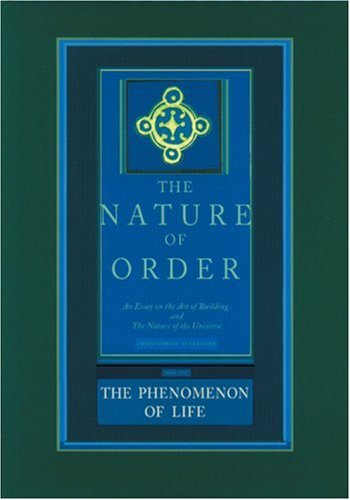The Nature of Order: An Essay on the Art of Building and the Nature of the Universe, Book 1 – The Phenomenon of Life (Center for Environmental Structure, Vol. 9)
In Book One of this four-volume work, Alexander describes a scientific view of the world in which all space-matter has perceptible degrees of life, and establishes this understanding of living structures as an intellectual basis for a new architecture.He identifies fifteen geometric properties which tend to accompany the presence of life in nature, and also in
In Book One of this four-volume work, Alexander describes a scientific view of the world in which all space-matter has perceptible degrees of life, and establishes this understanding of living structures as an intellectual basis for a new architecture.
He identifies fifteen geometric properties which tend to accompany the presence of life in nature, and also in the buildings and cities we make. These properties are seen over and over in nature and in the cities and streets of the past, but they have almost disappeared in the impersonal developments and buildings of the last hundred years.
This book shows that living structures depend on features which make a close connection with the human self, and that only living structure has the capacity to support human well-being.Christopher Alexander, the humble messiah of good architectural design, invites readers to get comfortable with their inner judgments in The Nature of Order: The Phenomenon of Life. Best known as principal author of A Pattern Language, Alexander has designed and built countless projects worldwide, all the while thinking deeply about the nature of his work. Frustrated with the 20th century’s reluctance to acknowledge human commonality and reliance on Cartesian mechanism, he urges us to rethink our understanding of space itself. With an architect’s precision and clarity, he explains his theory of life as the order inhabiting space–an order both variable in degree and apprehensible to human minds. Though the scientifically minded will resist his seeming subjectivity, it will be hard for any to argue that his many examples of good and bad design are equivalent. Alexander’s combination of powerful analysis and compelling synthesis makes The Nature of Order essential 21st-century reading. –Rob Lightner







Comments